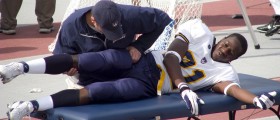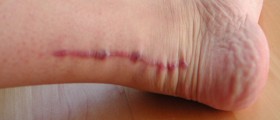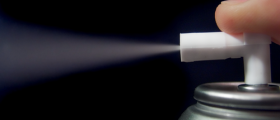
Sprained Ankle
Bones in human body are connected by ligaments. Excessive stretching of these structures is known as sprain. Sprains are a group of injuries which predominantly affect athletes. However, even people who are not engaged in sport can suffer from sprains. As for ankle sprains they can be divided into two types. The first one is the inversion sprain and the second is the medial ligament sprain. In the inversion sprain, the sole of the foot turns inwards while in the medial ligament sprain injury affects the inner side of the foot.
Recovery for sprained ankle basically depends on the extent of damage affecting the ligament. Patient's health as well as additional medical conditions may significantly influence the recovery of this not so serious injury. The treatment includes plenty of bed rest, application of cold compresses and obligatory elevation of the injured leg.
Symptoms of Sprained Ankle
Typical symptoms of sprained ankle include pain which intensifies with walking and if ankle has to bear weight, swelling of the injured area, erythema and bruising of the skin above the ankle. The injured ankle is warm and stiff which interferes with movements.
Treatment for Sprained Ankle and Recovery
The first thing one should do after the injury is to try to reduce the swelling. This can be successfully achieved by several maneuvers including rest, application of ice or cold compresses and elevation of the injured foot.
Rest is crucial for proper healing of the injury. It also prevents further damage of the ankle. The patient is due to stay in bed for a few days and try not to use the injured foot for a while. Crutches may be of additional help when patients are moving around.
Cold therapy includes application of ice packs to the injured area. This therapy should last approximately 15 to 20 minutes and needs to be repeated every 3-4 hours for the first couple of days after the injury.
Compression of the ankle is achieved by bandaging. Bandaging must be of proper tightness and it should not interfere in normal blood circulation.
Elevation of the injured ankle is an excellent way of prevention against swelling. If a leg is elevated gravity drains excess of fluid from the injured spot.
After the initial treatment patients are advised to engage in rehabilitation in order to strengthen the muscles around the injured ankle and to restore all the movements. These exercises are prescribed by physiotherapists.
Recovery time depends on the degree of the injury and general health of the patient. The process of healing varies a lot. In grade I of sprained ankle when patient suffers from minimal pain and swelling recovery lasts about a week. In grade II which features with moderate tearing of the ligament the complete healing can be achieved after 6 weeks. Grade III is the most serious type of sprain. Its characteristics are complete rupture of the ligament accompanied by intensive pain, swelling and bruising. In this case healing lasts up to 12 weeks.

















Your thoughts on this
Loading...